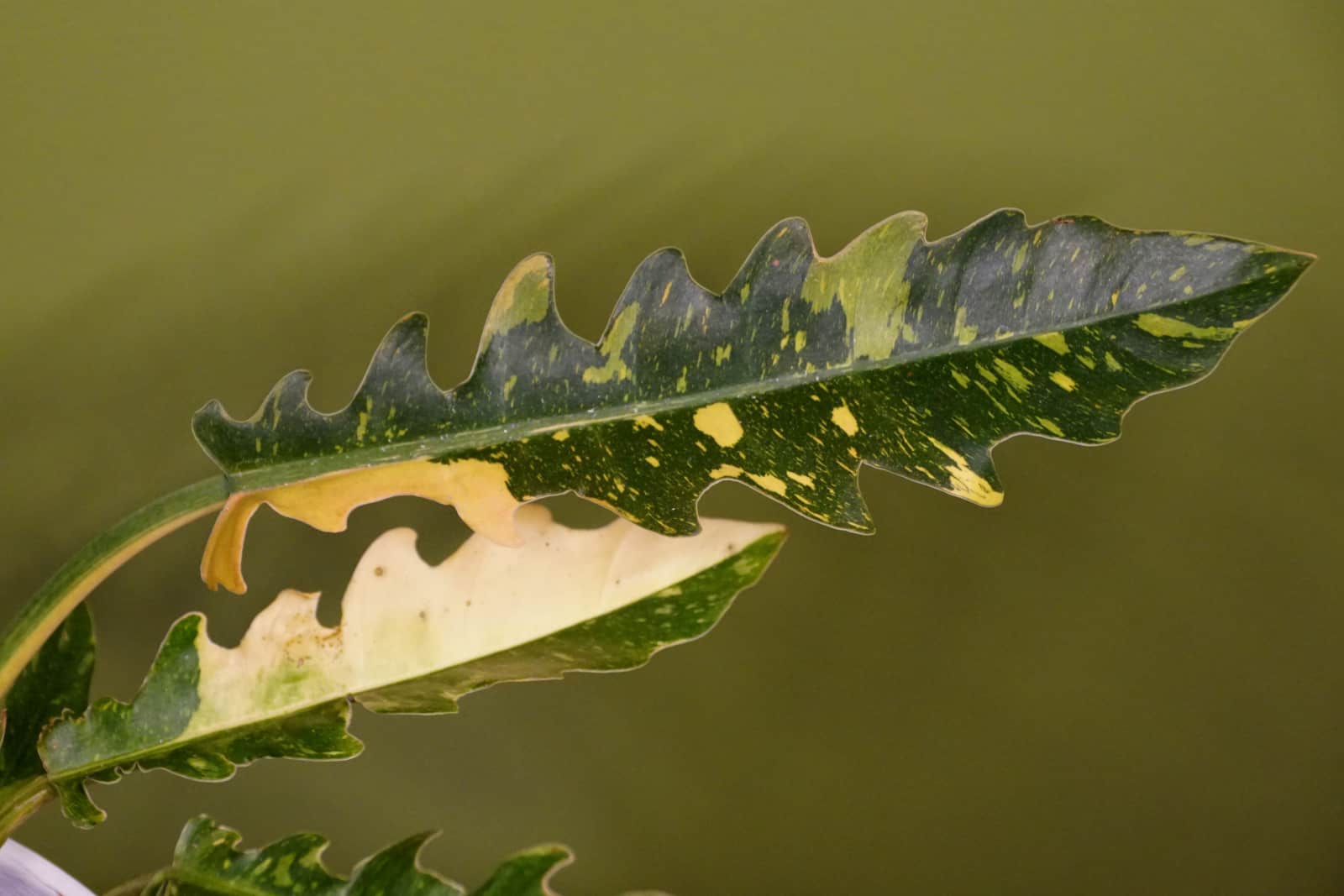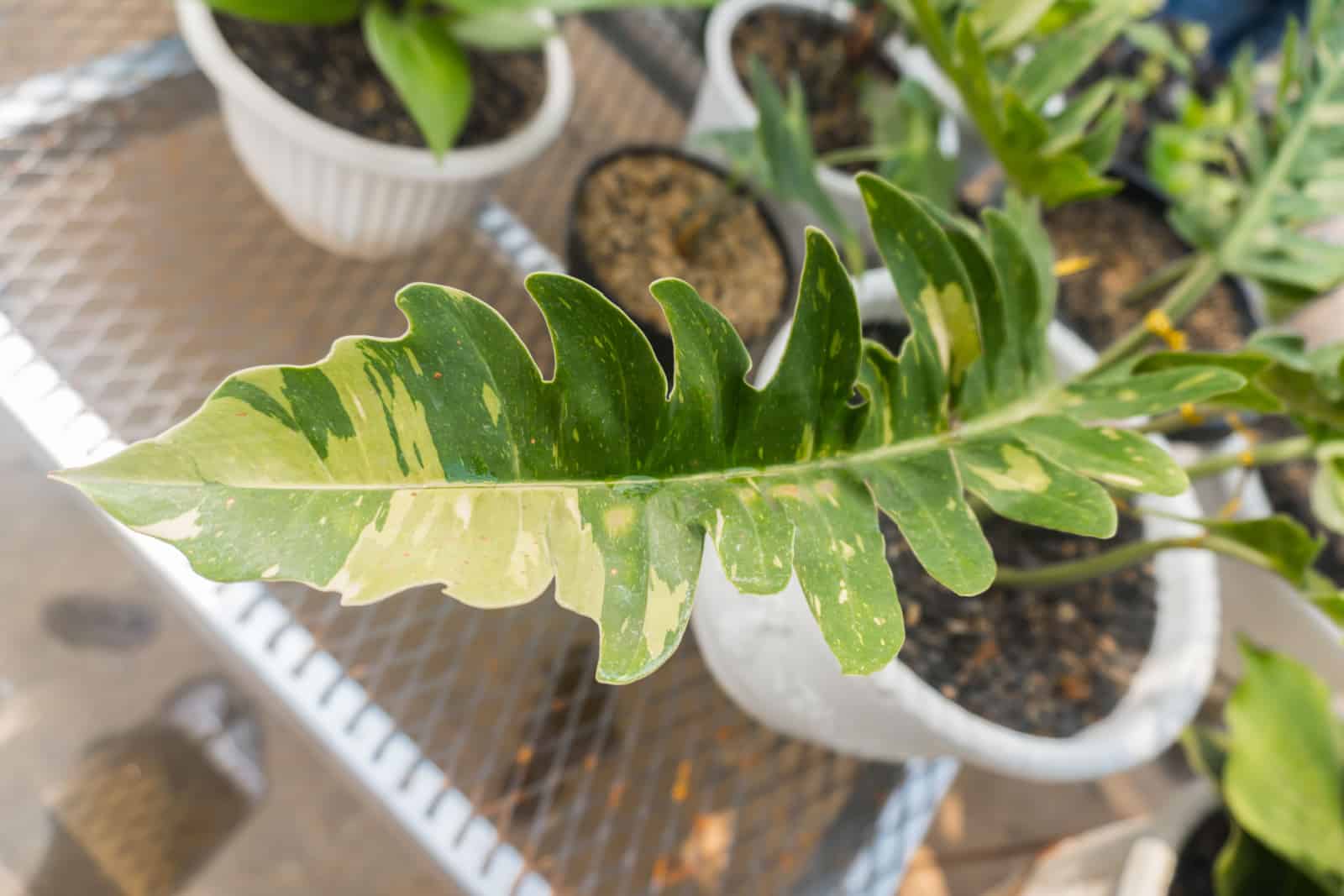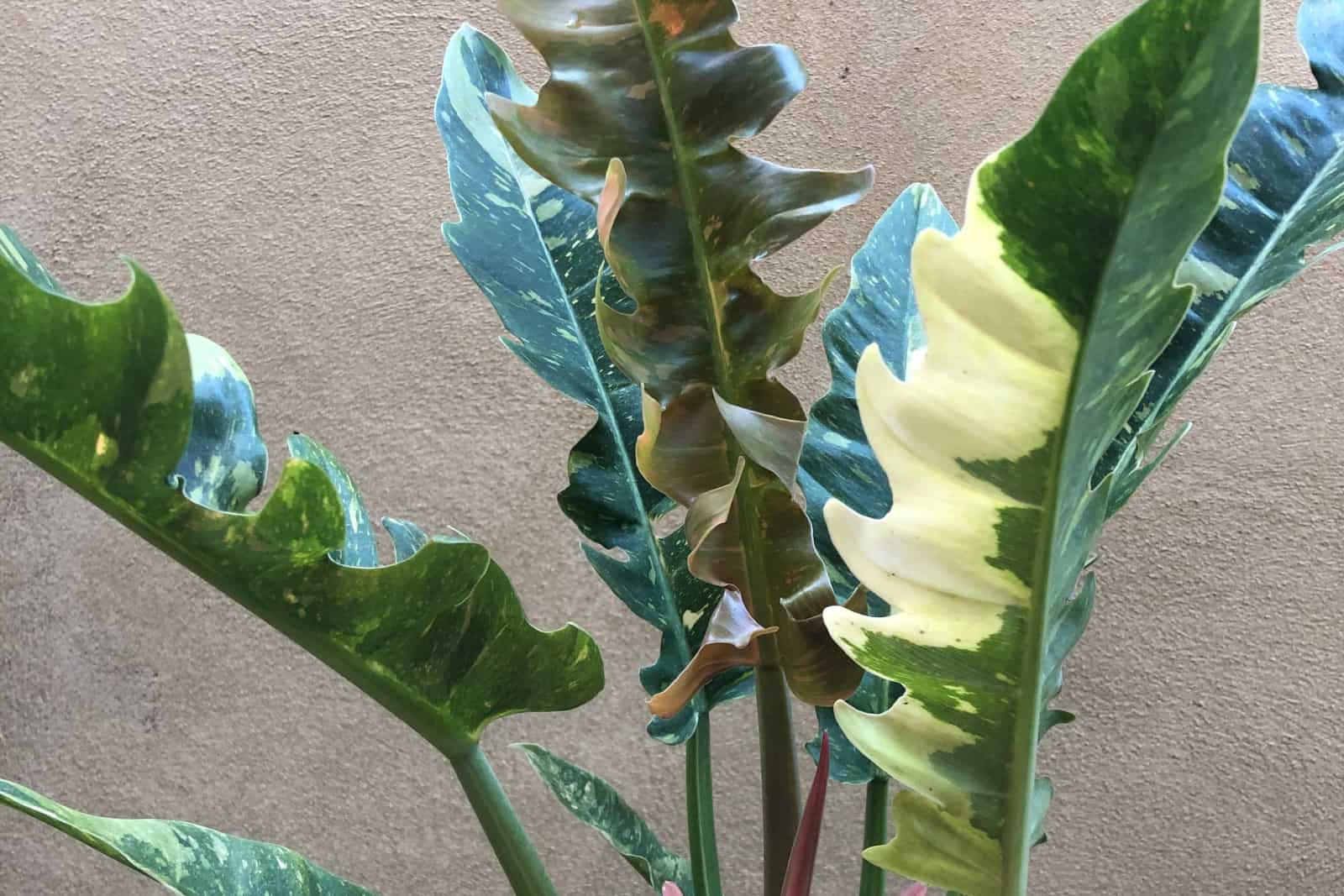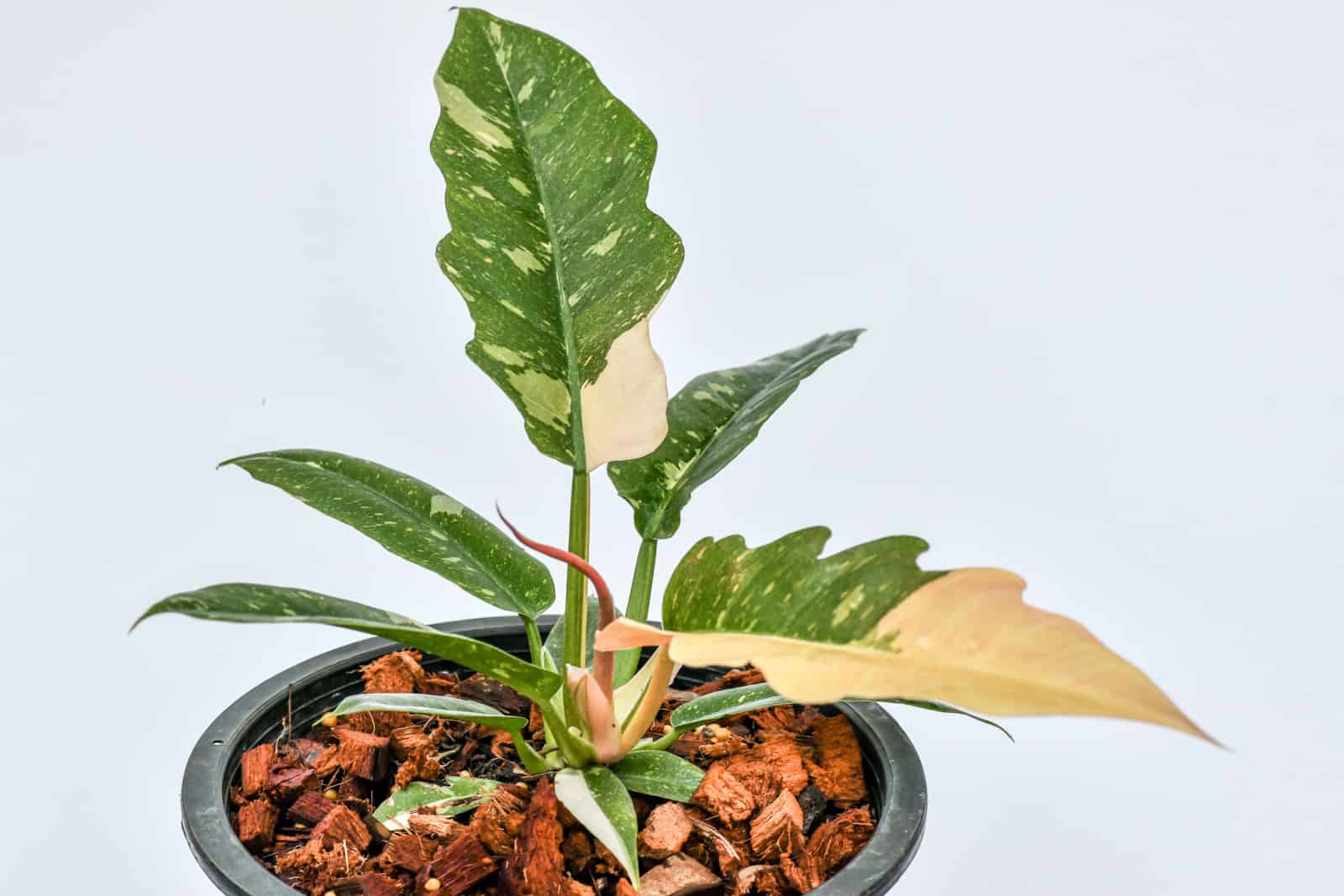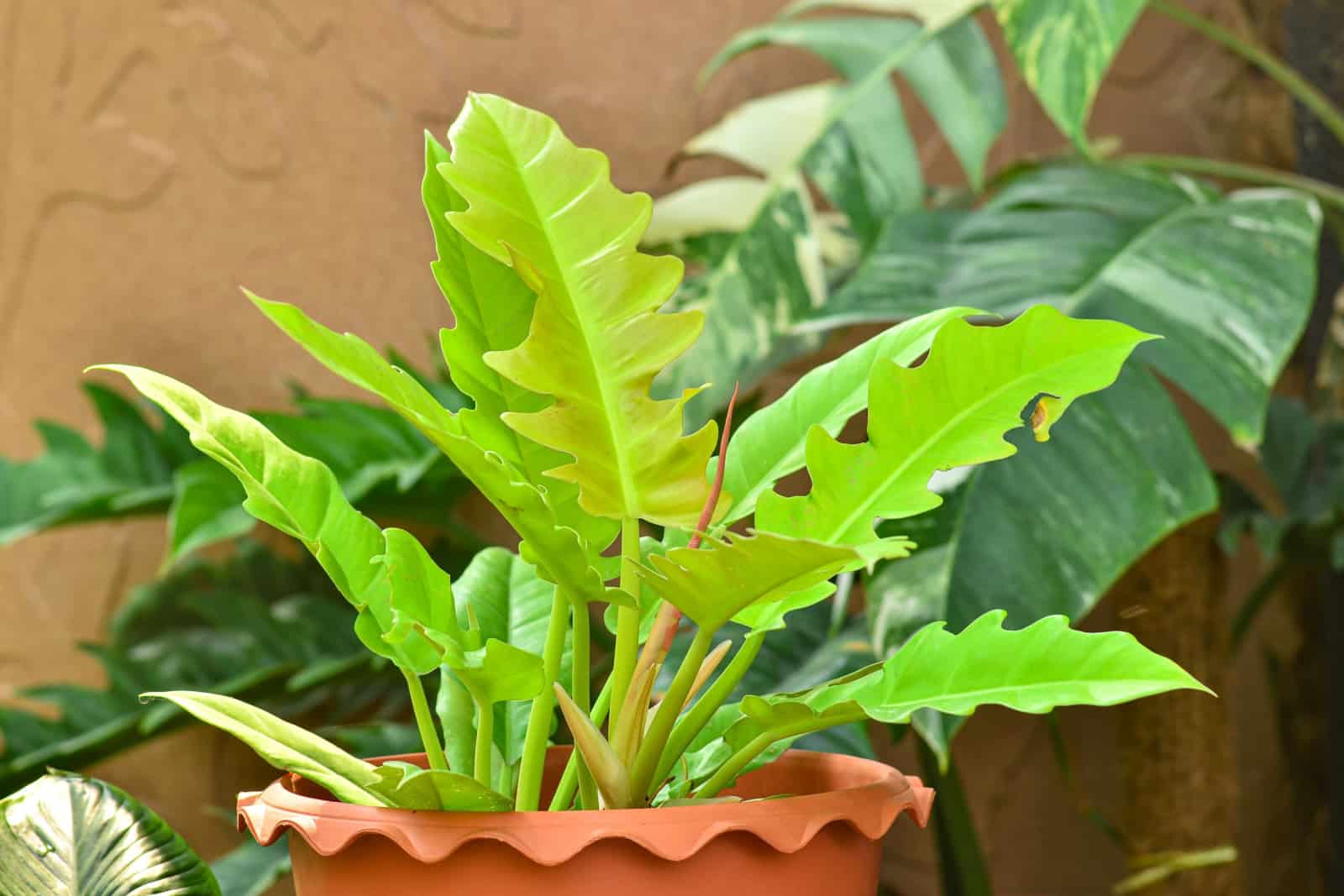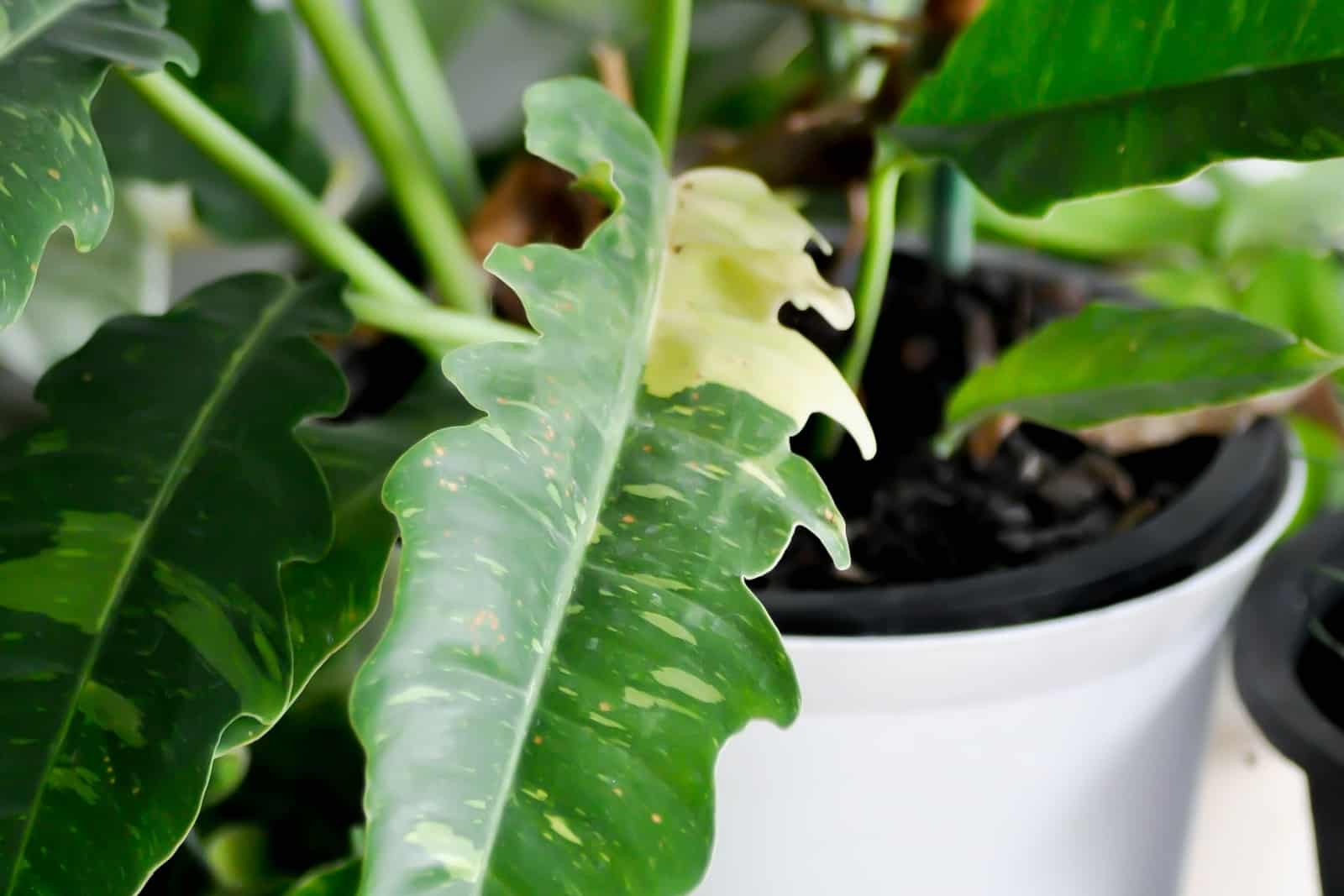Even experienced growers sometimes get confused with so many plant species and cultivars. Take Philodendrons, for instance. It seems that the list of its cultivars and hybrids is endless.
Well, I see this as an advantage; the more species, the bigger and prettier the plant collection!
In this article, I’ll tell you more about the Philodendron ring of fire, a rare Philodendron that will blow your mind when you see it.
The ring of fire plant is thought to be a hybrid between two famous Philodendron species, wendlandii and tortum, hence the name Philodendron wendlandii x P. tortum.
I’ll tell you more about the features of the ring of fire plant, its care requirements, propagation methods, and common issues along with their solutions.
Before we move on, here’s some basic info about the Philodendron ring of fire.
[table id=563 /]
Let’s get started!
What Is the Philodendron Ring Of Fire?
The ring of fire is a result of the cross-breeding of two species: the wendlandii and tortum Philos. It’s a slow-growing plant that has a climbing growth habit.
Since the ring of fire is a rare plant, don’t miss the chance to purchase it if you come upon one; it’s worth every penny!
The leaf color gives this Philo a unique appearance. It’s often referred to as the Philodendron ring of fire variegated; the leaves are variegated and may come in white and bright shades of pink, red, or orange.
The fact you can grow this Philo attached to a moss pole or in hanging baskets makes it even more desirable.
Just like all other Philos, the ring of fire is an air purifier, so keeping it as a houseplant is an excellent idea.
The only drawback of the Philodendron ring of fire is its toxicity. The variegated leaves contain calcium oxalate crystals, which are dangerous if ingested.
If you place the plant where children or pets can’t reach it, there’s nothing to worry about.
Philodendron Ring Of Fire Care Guide
All Philodendron plants, including the Philodendron prince of orange and horsehead Philodendron, are easy to maintain, which is the main reason they are the most common houseplants.
Here’s a table with a brief overview of the Philodendron ring of fire care requirements.
[table id=564 /]
Let’s get into details!
Light Conditions
The ring of fire is a tropical plant, and it’s not used to direct sunlight in its natural environment. It will grow well if given a lot of direct sun, but only in the mornings.
The strong rays of the afternoon sun will quickly scorch the leaves of the Philodendron ring of fire and impact the watering needs.
This Philo performs best in bright indirect light. Placing it next to east- or west-facing windows is an excellent way to give it enough indirect light.
Low light doesn’t significantly impact growth in most cases, but if you keep your ring of fire in a dark spot and think it’s not receiving enough light, consider getting artificial lights.
Temperature Conditions
Your Philo will grow well in average temperatures, so you can keep it in any room with a temperature range of 60-75°F.
The only problem with the ring of fire plant in terms of temperature is its sensitivity to abrupt temperature changes.
This feature makes ring of fire plant care more complex during winter months. You’ll need to find a spot away from heating devices and drafty windows.
On the other hand, high temperatures may also be fatal to this slow grower because the growth rate will decrease even more and your ring of fire will also quickly dehydrate.
Therefore, keep the temperatures at the recommended range to avoid any issues.
Humidity Conditions
The ring of fire Philodendron isn’t as fussy about humidity levels as other common tropical plants. Average humidity levels will suffice.
If you notice any changes in appearance, such as brown leaf tips, provide a more humid environment. One good method for raising humidity for this Philo is misting.
Don’t leave the ring of fire leaves wet because they could soften and eventually die.
Another way to ensure a more humid environment for your ring of fire is by placing it near other indoor plants, such as Anthuriums, pothos, and Monsteras.
The pebble tray method should also work well and slightly increase humidity.
Soil
The roots of the Philodendron ring of fire are very sensitive to overwatering. You can start with overwatering prevention by using the right potting mix.
A soil blend made for aroids is a combination of well-draining, porous, and nutrient-rich ingredients, which encourage healthy growth, enhance air pockets for oxygen flow, and prevent water accumulation in the soil.
You can go with a DIY version of the soil blend by mixing standard potting soil, peat moss, perlite or pumice, and orchid bark.
All these ingredients will help you avoid watering issues, and also ensure the necessary nutrients for the healthy growth of your Philodendron ring of fire.
Watering Schedule
The conditions listed above should be perfect for avoiding watering issues. Why is that so important?
Well, the easiest way to kill the ring of fire Philodendron is to let its roots sit in water. This is a very dangerous situation that could quickly result in root rot disease, which is lethal.
By ensuring the correct temperatures, humidity, light levels, and soil type, you are only one step away from the perfect watering schedule.
Moist soil is your goal when it comes to watering the ring of fire plant. You need to find a middle ground between soggy and overly dry soil.
Check Soil Moisture Content
A few things can help you decide if it’s time to water your Philodendron ring of fire plant. First, insert your finger in the soil (or a wooden stick if you don’t like the feeling of dirt), and if the upper 25% of the soil is dry, add water.
If unsure after inserting your finger, check the color of the soil; dark brown indicates higher soil moisture content, so check again tomorrow.
If you are a beginner and don’t have any knowledge of soil and moisture, consider getting a moisture meter; it will literally save your plant’s life!
As mentioned, winter care for a ring of fire can be tricky, so cut back on irrigation to avoid overwatering. You’ll need to water your ring of fire Philo more frequently during the hot summer months.
Fertilizing Schedule
I’m sure you’ve realized by now that the ring of fire plant isn’t too demanding. Another thing that will prove that is the fertilizing needs of this Philodendron.
Remember that this is a slow grower, and you can’t really do much to increase its growth rate significantly.
Feeding will, of course, encourage healthier new growth, but your Philo won’t grow at a higher speed.
I use slow-release fertilizer and apply it only during the growing season. There’s a simple reason for it – the ring of fire Philo will gradually receive the necessary nutrients during its active growth period.
Plant food isn’t necessary during colder months as the ring of fire Philo is dormant during this time.
Pruning & Staking
The slow growth rate has an impact on pruning requirements for the ring of fire plant. You can occasionally prune your Philo if you have some specific shape in mind.
Still, it will grow pretty well if left unpruned.
There are certain cases when pruning is unavoidable. For instance, diseased leaves that change color or are deformed require pruning.
Sanitize your pruners or shears and remove any leaves that don’t look healthy.
Staking is an excellent way to encourage growth. You can use coco coir, a moss pole, or some similar tools for structural support.
Repotting
Another amazing feature that all beginner growers out there will be happy to hear about are the Philo ring of fire’s repotting needs.
Once it outgrows its pot and becomes rootbound, which takes about 2 years, your Philo will need a new pot and fresh potting mix.
As with every other houseplant, the roots of the ring of fire plant are delicate, so you should avoid pulling the plant when taking it out of the current pot.
Once your Philo is out, you must clean the root ball from the excess soil. Even though the plant looks healthy above the soil line, some roots may be diseased.
After you clean the rootball, check the root system and remove any suspicious roots with sanitized pruners.
Take a pot that’s 2-inches larger, fill it halfway with the correct potting mix, and put your Philo in it. Add more soil and pack it around the plant’s base.
Water the plant well and find a spot that’ll receive enough bright indirect light.
Philodendron Ring Of Fire Plant Propagation
The only way to get the ring of fire hybrid plant, in general, is through propagation. Luckily, it’s very easy to multiply this Philo. The hardest thing, though, is actually finding a ring of fire plant to propagate.
If you are lucky enough to find this Philo, don’t miss the chance to propagate more.
All Philos, including the ring of fire and Philodendron birkin, can be propagated in a similar way. The easiest way by far is by using stem cuttings. I’ll show you how to take ring of fire cuttings and two ways to root them.
Water Propagation
Propagating plants in water is a straightforward and, in most cases, successful way to get new plants. Prepare a sterilizing solution, cutting tools (knife, scissors, pruners), a transparent container, distilled water, and a rooting hormone.
First, you need to take the cuttings of your Philodendron ring of fire. Inspect your Philo closely and select a healthy stem with leaf nodes (the more, the merrier).
Make an incision just below the leaf node; the ring of fire stem cutting should be about 3 inches long. You can apply rooting hormone at this point to encourage root sprouting, but it’s not obligatory.
Fill the transparent container with distilled water and place the ring of fire stem cutting in it. I recommend changing the water in the container every 2-3 days to prevent contamination.
You should notice new growth in approximately 2 weeks, and then it’s time for transplantation.
Soil Propagation
Another way to root the stem cuttings of the ring of fire Philo plant is by planting it directly in the soil.
Taking the stem cutting is the same as for water propagation. Again, you can dip the cut end in some type of rooting hormone, but it’s not a must.
Fill the nursery pot with fresh soil mix, make a hole in the center, and place the cutting in it.
Ensure enough bright indirect light for the ring of fire cutting to encourage root sprouting and new growth.
The approximate time for root development is 5 weeks.
Common Issues
From what we have seen above, we can conclude that the ring of fire is one of the best plants to grow indoors.
It’s not prone to many issues, but that doesn’t mean it’s immune from them either. Pay close attention to this section because you don’t want to lose this rare plant.
Pests
The Philodendron ring of fire is an eye-catching plant, and it won’t go unnoticed by annoying pests.
Here’s a list of the most common creatures that may infest your ring of fire Philo.
1. Mealybugs: Tiny white spots on ring of fire plant leaves are a tell-tale sign of naughty mealybugs. They’ll suck the life out of your Philo. I recommend removing them with neem oil or similar natural solutions. Use pesticides only in cases of severe infestation.
2. Spider mites: White webbing on the leaves indicate the presence of spider mites. Again, try removing them with natural solutions before using any chemicals.
3. Thrips: These are pretty dangerous pests as they can transmit different diseases. The leaves will have tiny reddish-brown spots if infested with thrips. Neem oil, rubbing alcohol, and insecticidal soap solutions will help you get rid of these nuisances.
Diseases
Here’s a list of the most common diseases that afflict the Philodendron ring of fire.
1. Root rot: If you overwater your Philo, it’ll most likely develop root rot disease. The most common signs of root rot in the ring of fire plant include soggy soil, an unpleasant smell, and leaf and root discoloration.
My recommendation is to repot your Philo if you notice these signs.
2. Erwinia blight: This bacterial disease typically attacks new growth. The most common signs are discolored spots (deep green or yellow) and lesions on older leaves.
I recommend treating the leaves with copper-based bactericides.
3. Rust: If you notice the leaves are falling off before they reach their adult phase, check out if they have tiny spots over the surface. If so, rust disease is most likely the culprit.
I recommend pruning the affected ring of fire plant leaves with sanitized scissors.
Leaf Discoloration & Deformation
Yellow leaves typically occur due to excess water in the soil. I’ve mentioned the other signs of root rot that can help you determine if your ring of fire has the disease.
Another possible culprit for yellowing is underwatering. Curling, drooping, and wilting typically occur after yellowing.
Direct sunlight may also cause yellowing, but the leaves also scorch in this case.
If you adjust all the conditions, your Philodendron ring of fire will recover soon. Remove severely affected leaves and repot if the damage is too great.
Leaf Spots
If black spots appear on the leaves of your ring of fire Philo, you’ll need to check for pests and diseases. Honestly, black is the last color I want to see on my plants.
Inspect the leaves of your Philo carefully, and if there are pests, remove them using our techniques. However, removing the leaves in the case of pests and diseases has proven to be the best method.
Of course, your cutting tools need to be clean to prevent further contamination.
Remember that your ring of fire is pretty weak at this point, so it will need new nutrients, which you can ensure by repotting.
Brown spots aren’t that dangerous in most cases. Underwatering is most likely the cause of brown spots, so search for other signs of underwatering, such as overly dry soil that crumbles to the touch, and wilting and curling leaves.
Pay attention to the water type you use for your plants; tap water isn’t a good choice due to the chemicals found in it. Rainwater is by far the best option.
If none of this works, check for rust disease.
Wrapping Up
There’s no better feeling than adding a rare plant to your plant collection. I guess it’s because of the time you spend looking for it.
The Philodendron ring of fire is a breathtaking plant, and you definitely shouldn’t miss the chance to purchase one if you come upon it.
Use our advice for ring of fire plant care, and I’m sure it will be happy and healthy for a long time!
Good luck, and until next time!
Like this post? Share or pin it for later!

